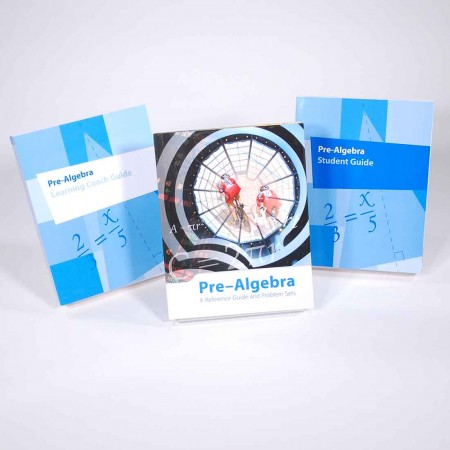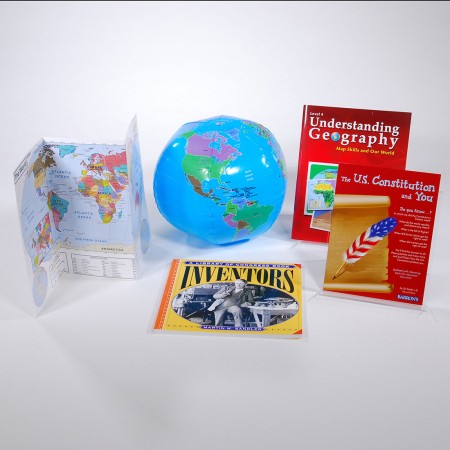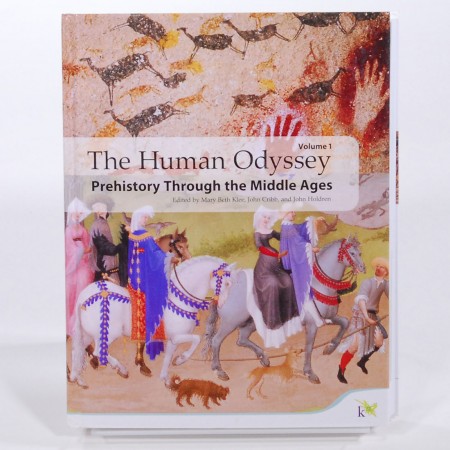Course Overview
In this 7th Grade math course, students take a broader look at computational and problem-solving skills while learning the language of algebra. Students translate word phrases and sentences into mathematical expressions; analyze geometric figures; solve problems involving percentages, ratios, and proportions; graph different kinds of equations and inequalities; calculate statistical measures and probabilities; apply the Pythagorean theorem; and explain strategies for solving real-world problems. Online lessons provide demonstrations of key concepts, as well as interactive problems with contextual feedback. A textbook supplements the online material. Students who take Pre-Algebra are expected to have mastered the skills and concepts presented in the K12 Fundamentals of Geometry and Algebra course (or equivalent).
Course Outline
SEMESTER ONE
Unit 1: The Basics
Let's start at the very beginning; it's a very good place to start. Just as you need to know basic grammar and vocabulary as you begin to learn any language, you need to know some basic building blocks as you begin to learn algebra.
- Order of Operations
- Variable Expressions
- Writing Expressions for Word Phrases
- Comparing Expressions
- Replacement Sets
- Related Equations
- Solving Problems
Unit 2: Addition and Subtraction
If you have two oranges and a friend gives you three oranges, how many do you have? If you then give four oranges to your friend, how many are you left with? This sort of addition and subtraction problem with passing fruit back and forth is the type of simple math you have done since you were very young. When you expand your addition and subtraction skills to negative numbers and decimals, you can solve many more complicated problems.
- Integers on a Number Line
- Adding Integers
- Subtracting Integers
- Decimals on a Number Line
- Adding Decimals
- Subtracting Decimals
- Addition and Subtraction Properties
- Equations Involving Addition and Subtraction
- Addition and Subtraction Applications
Unit 3: Multiplication and Division
Isaac Newton's third law of motion is often paraphrased as “for every action, there is an equal and opposite reaction.” Just as forces come in pairs, so can mathematical operations. Multiplication and division are inverse operations. They undo each other and can both be used to solve many types of problems.
- Multiplying Integers and Decimals
- Dividing Integers and Decimals
- Multiplication and Division Properties
- Rounding and Estimation
- Equations Involving Multiplication and Division
- Multiplication and Division Applications
Unit 4: Fractions
Every fraction can be written as a decimal and every decimal can be written as a fraction. As a result, you could do just about all math with only fractions or only decimals, but decimals are used for certain applications just as fractions are used for others. For example, carpenters use fractions and mixed numbers quite a bit; anybody building a house or a deck deals with lots of fractions.
- Equivalent Fractions
- Multiplying Fractions
- Dividing Fractions
- Common Denominators
- Adding and Subtracting Fractions
- Working with Improper Fractions and Mixed Numbers
- Multiplying and Dividing Mixed Numbers
- Equations with Fractions and Mixed Numbers
Unit 5: Combined Operations
Many yachts can be powered by the wind, by a gas engine, or both. A hybrid automobile can run on gasoline or electric power. These combinations are very powerful. Combining addition or subtraction with multiplication or division is powerful as well. You can use equations and expressions with mixed operations to solve many complex problems.
- The Distributive Property
- Like Terms
- Expressions with Mixed Operations
- Equations with Mixed Operations
- Error Analysis
- Inequalities
Unit 6: Number Properties
Astronomers study things that are very, very far away. For example, the Horsehead Nebula is about 14,000 trillion kilometers away. On the other extreme, molecular geneticists study things that are very, very small. A double helix of DNA has a diameter of about one nanometer (a billionth of a meter.) With exponents, you can describe very great or very small distances.
- Positive Exponents
- Factors and Primes
- GCF and Relative Primes
- Negative Exponents
- Powers of Ten
- Scientific Notation
Unit 7: Geometry Basics
Shapes such as polygons and circles provide us with shelter, art, and transportation. Some artists use geometric shapes in their art, but most painters and photographers use rectangular frames to surround their art. Look at any art museum, and you will see triangles, rectangles, and other polygons in the structure of the building and in the artwork inside.
- Points, Lines and Planes
- Rays and Angles
- Parallel Lines and Transversals
- Triangles
- Polygons
- Circles
- Transformations
- Congruence
Unit 8: Semester Review and Test
- Semester Review
- Semester Test
SEMESTER TWO
Unit 1: Ratio, Proportion and Percent
Model builders use ratios and percents to describe how their models compare to real objects. They can use proportions to figure out the length of every item in the model.
- Ratio
- Proportion
- Percents, Fractions and Decimals
- Similarity and Scale
- Working with Percent
- Percent of Increase or Decrease
- Simple Interest
Unit 2: Analytic Geometry
A pilot uses numbers to locate the airport she is flying to. An air traffic controller uses numbers on a radar screen to locate each airplane approaching the airport. Without a system of locating points, airplanes would have a hard time getting anywhere safely.
- Points on the Plane
- Two-Variable Equations
- Linear Equations and Intercepts
- Slope
- Problem Solving
- Relations and Functions
- Systems of Linear Equations
Unit 3: Perimeter and Area
You can find geometric shapes in art. Whether determining the amount of leading or the amount of glass for a piece of stained glass art, stained-glass artists need to understand perimeter and area to solve many practical problems.
- Types of Polygons
- Perimeter
- Areas of Rectangles and Triangles
- Special Quadrilaterals
- Areas of Special Quadrilaterals
- Circumference
- Areas of Circles
Unit 4: Square Roots and Right Triangles
Since ancient times, people have used right triangles to survey land and build structures. Even before Pythagoras was born, the relationship between the side lengths of a right triangle has been essential to anyone building just about any structure, including pyramids, houses, skyscrapers, and bridges.
- Rational Square Roots
- Irrational Square Roots
- The Pythagorean Theorem
- The Distance Formula
- Special Types of Triangles
- Trigonometric Ratios
Unit 5: Solid Figures
Gas-powered engines are driven by little explosions that move pistons up and down in cylinders. When you add up the volume of all the cylinders, you get the displacement of the engine. For instance, each cylinder in a four-cylinder, 1000 cc engine has a volume of 250 cubic centimeters. Engineers and mechanics must accurately compute volume when they build or maintain engines.
- Volume and Capacity
- Volumes of Prisms and Cylinders
- Volumes of Pyramids and Cones
- Surface Area
- Surface Areas of Prisms and Cylinders
Unit 6: Counting and Probability
How many apples have mass between 100 and 200 grams? How many are bruised? How many are not yet ripe? Checking every single apple would probably be pretty impractical, but if you understand probability and sampling, you could make a good estimate.
- Counting Principles
- Permutations
- Combinations
- Probability
- Mutually Exclusive Events
- Samples and Prediction
Unit 7: Statistics
Data are everywhere. When you look at a group of people, you could use many numbers to describe them. How tall are they? How long is their hair? How old are they? What is their gender? What color are their eyes? Statistics helps you make sense of data.
- Graphs
- Measures of Center
- Stem-and-Leaf Plots
- Box-and-Whisker Plots
- Frequency Tables and Histograms
Unit 8: Semester Review and Test
- Semester Review
- Semester Test















